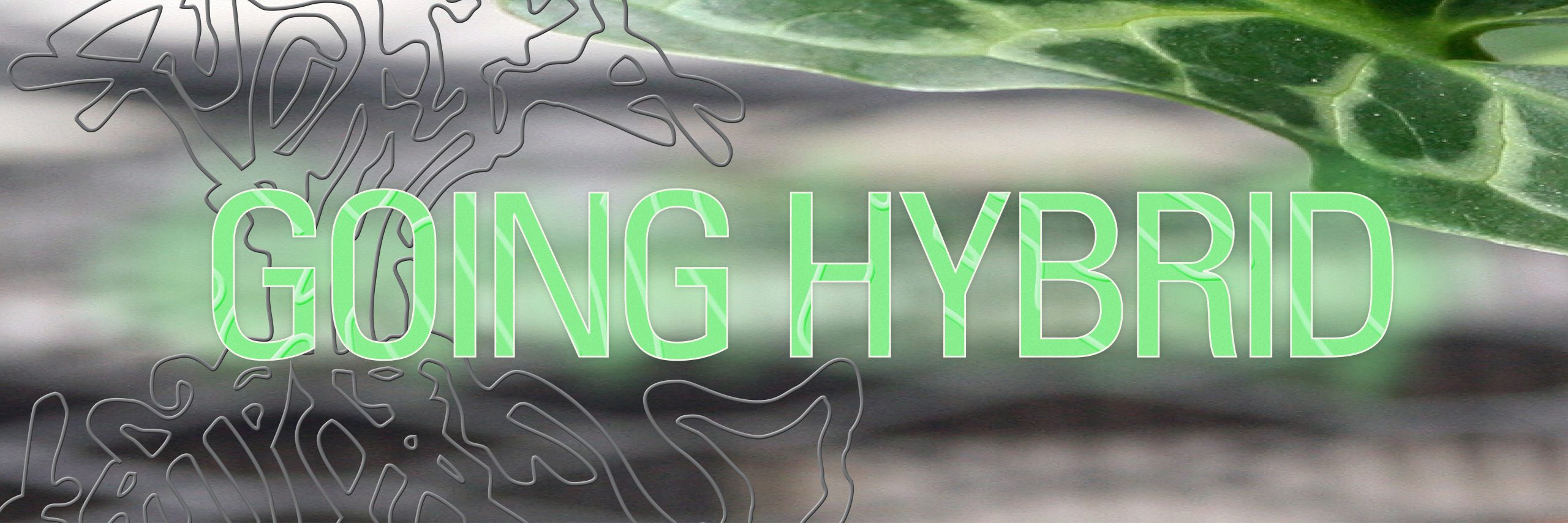Seeing the wild amount and variety of experimental publications brought to the world, it is hardly possible to claim that any of them is a ‘best practice’. But some of them are certainly highly interesting in terms of formal experiment, quality, or redefinition of the reading experience. Below, you find an incomplete list of tools and practices that seem relevant and inspiring to Hybrid Publications group of Going Hybrid. You can find more information about this group, its members, and the issues it’s tackling in a previous blogpost.
Tools
Notion
Workspace for personal use and teams. Famous for its many features combining notes, goal board, to-do lists, customized maps, links, etc., and structuring them in a useful way. A state-of-the-art digital collaborative working environment.
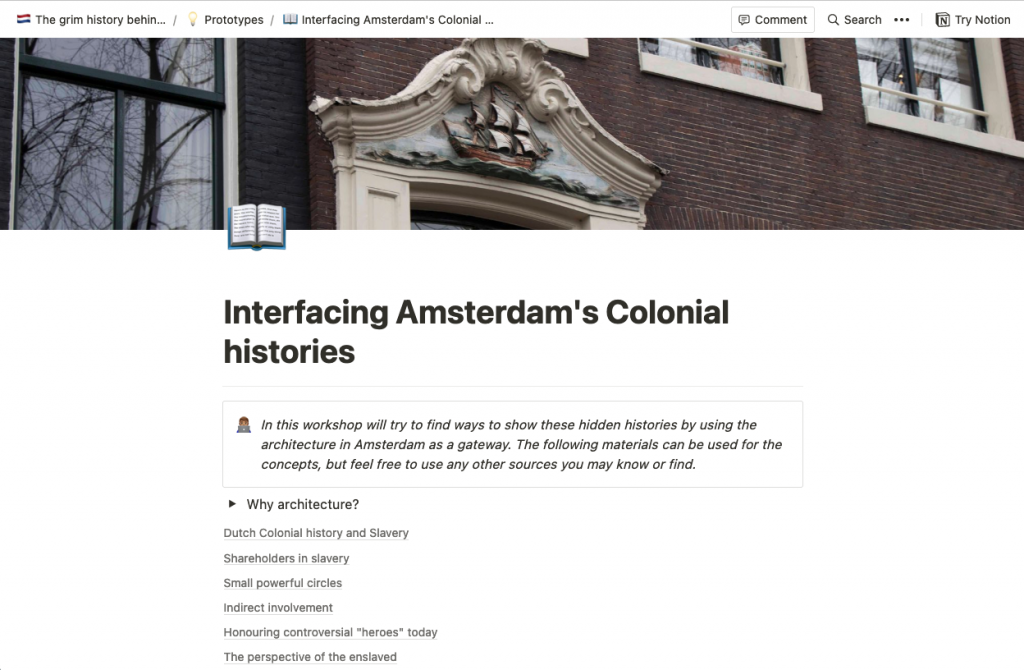
Your World of Text
Infitine grid of text editable for any visitor. ‘New worlds’ (always public) are created by typing URL’s in the address bar. Unmoderated, full of trolls. Simple, playful, triggering the imagination. Go there and spend a few hours, it might just make your day.
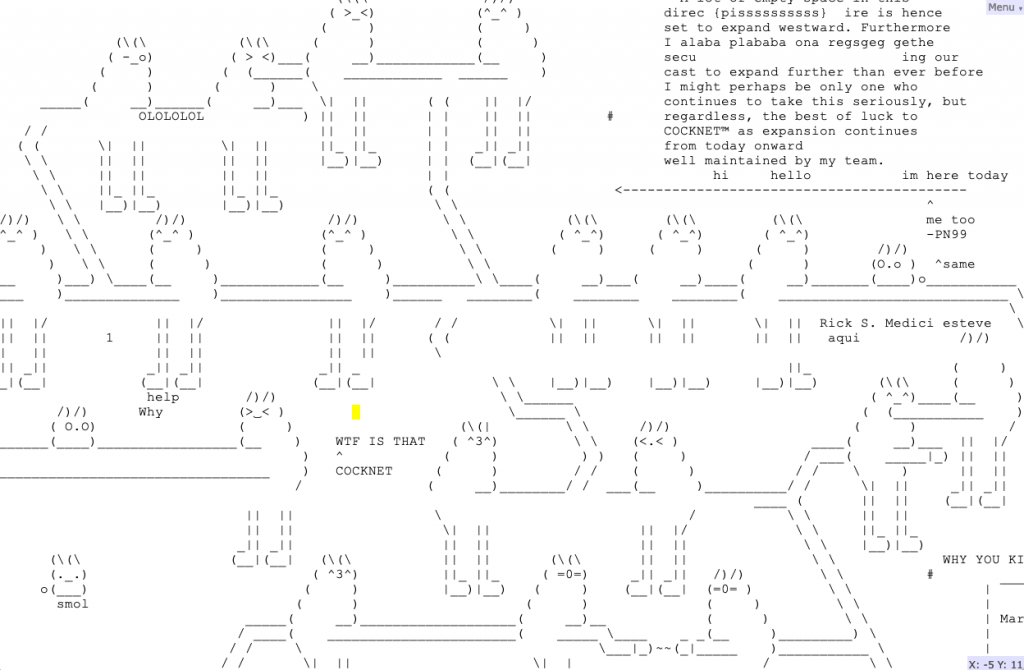
More: https://www.yourworldoftext.com/
Are.na
Are.na is a popular tool among creatives for public-private archiving which supposedly helps you to ‘organize your internet and expand your brain’. It allows to create simple collections by posting and reposting in a blog- or feed-like structure.
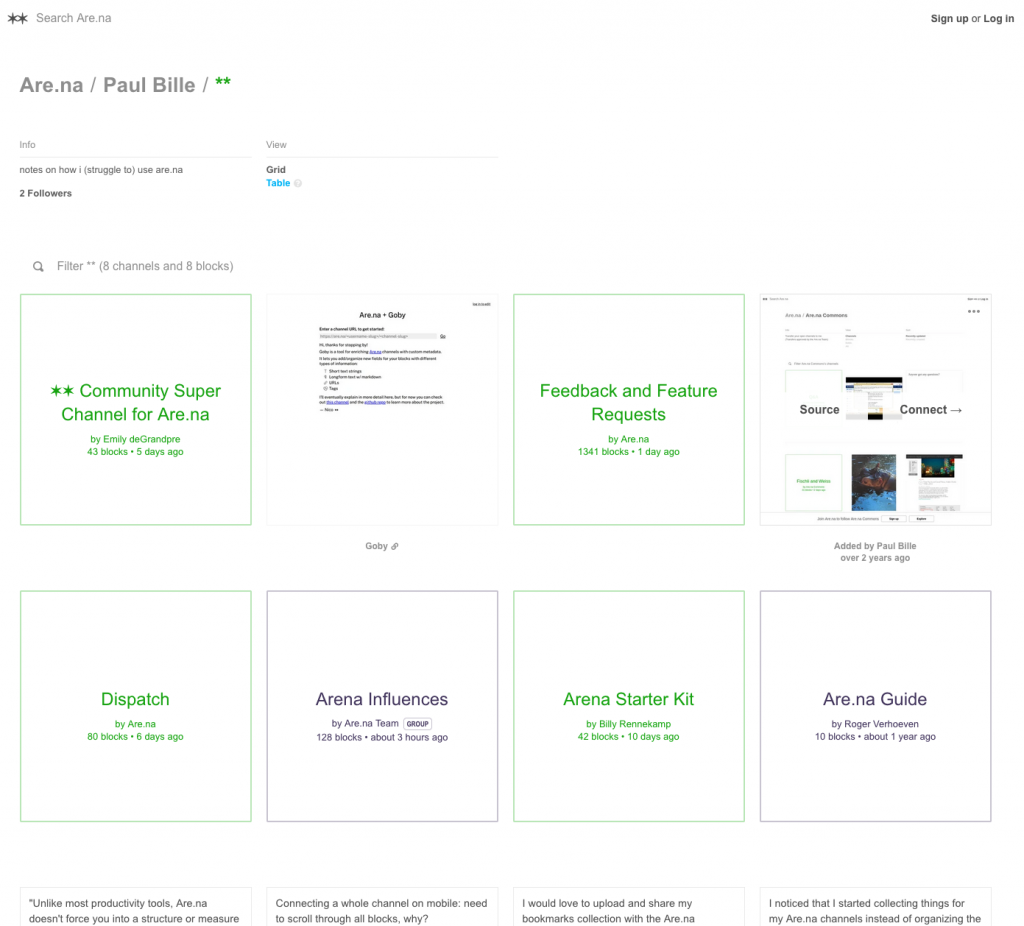
More: https://www.are.na/
Print Are.na
Print Are.na allows to make a book from a public arena channel. It scrapes a public Are.na channel, structures and paginates the content, and creates a printable .pdf. It can be used to print at home or create a serious book through the print-on-demand service Lulu.
print.are.na was created by Mindy Seu, Charles Broskoski and Ekene Ijeoma. print.are.na uses bindery.js, an open-source library for creating books using HTML and CSS, created by Evan Brooks. The first version print.are.na was created by Callil Capuozzo for the 2017 Cybernetics Conference.
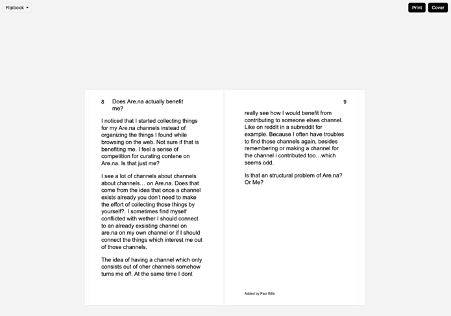
More: https://print.are.na/
ChattyPub
ChattyPub is a design tool in the making developed by Hackers & Designers. It leverages a chat interface to apply styles and formats to the content of a publication. ChattyPub is a collaborative publication/zine-making tool built on top of the chat platform Zulip. By sending messages, reacting with emoji and writing simple CSS style rules the publication can be collectively designed. Concretely, this means that every text sent in a chat is automatically added to the front-end publication. The primary output of ChattyPub is a web publication, but automated print versions of the files can be generated, turning the chats into hybrid publications.
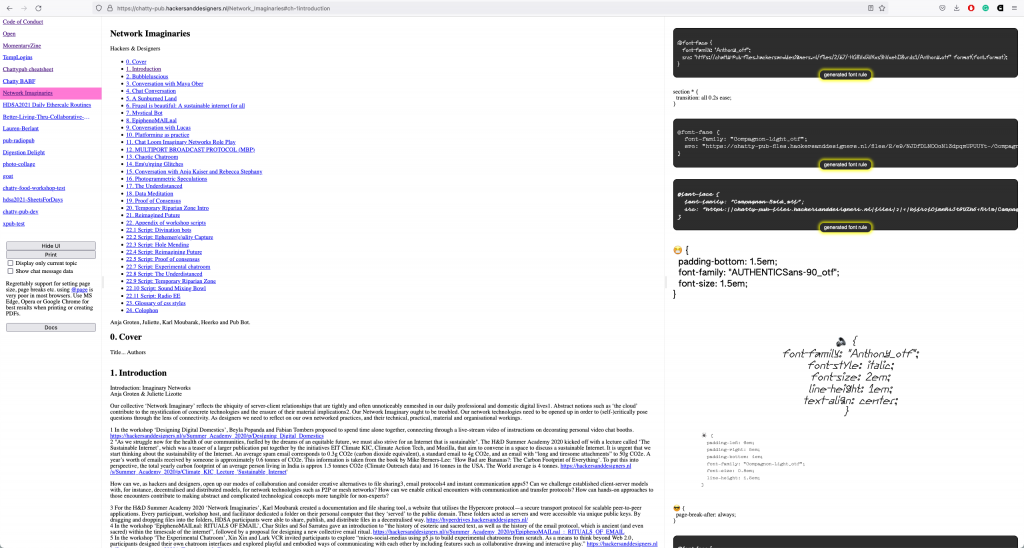
The use of ChattyPub requires chatters-authors to use basic coding, so it is not intuitively useable for anyone. However, with a little teaching, it’s a very low-threshold way of playfully publishing together with surprising outcomes such as this one, this one, and this one. With ChattyPub workshops, Hackers & Designers teach participants to use the tools and, ideally, create a publishing community in the process.
More: https://chatty-pub.hackersanddesigners.nl/
Hypothes.is
Hypothes.is is a free Chrome extension that lets users add annotations to websites and have discussions on websites. Opening this bookmarklet projects a transparent layer over any website, PDF or ePub, in which one can comment and annotate even when the original website does not provide that possibility. Moreover, other users opening that same text, will be able to see others’ annotations and react to them. Comments section on YouTube closed? Just open the Hypothes.is bookmarklet and comment away. It is obvious that Hypothes.is, as a unique and powerful tool against centralized power and censorship, is extremely promising for educators, journalists, researchers, publishers, and activists. However, it is evenly vulnerable to trolls and spam.
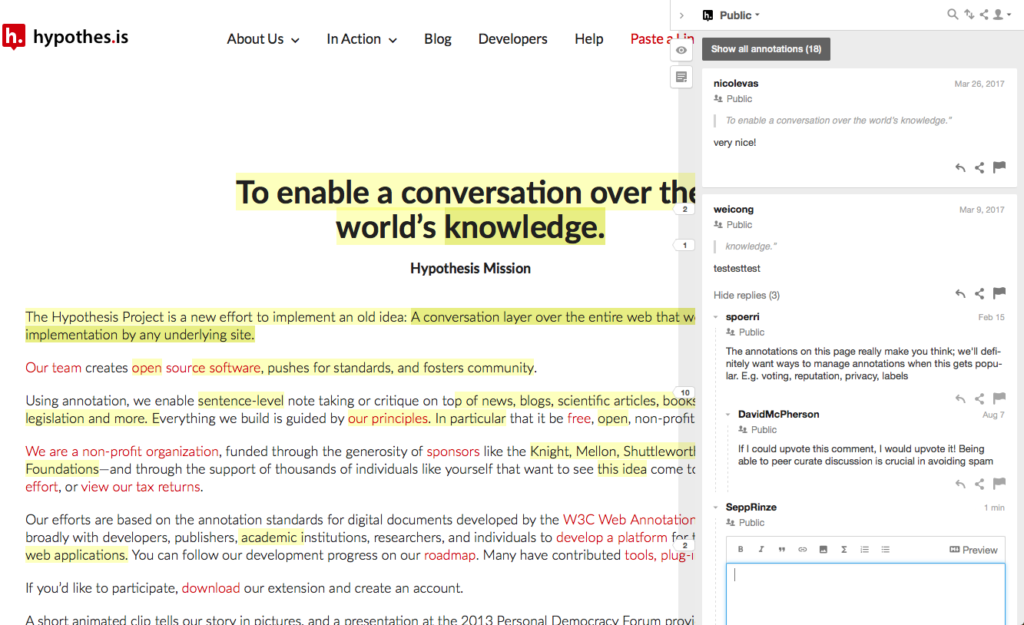
More: www.hypothes.is
Etherpad (and Other Non-Google Text Editors)
There is a wide array of text editors that allow for real-time collaborative rich text (WYSIWYG) writing, editing and commenting. Examples range from the widely used, user-friendly, but predatory Google Docs, to open-source alternatives like Jupyter, Overleaf, and the academic publishing platform Editoria, to the fully encrypted CryptPad.
Possibly the most-used of these non-Google online text editors is Etherpad. Etherpad is a highly customizable open source online editor providing collaborative editing in really real-time. Accesible because you do not need an account. Privacy-friendly, because IP adresses are not stored. As open-source software, it can be used for instances such as Riseup (pad.riseup.net). Etherpad and Cryptpad show that GoogleDocs is extremely avoidable.
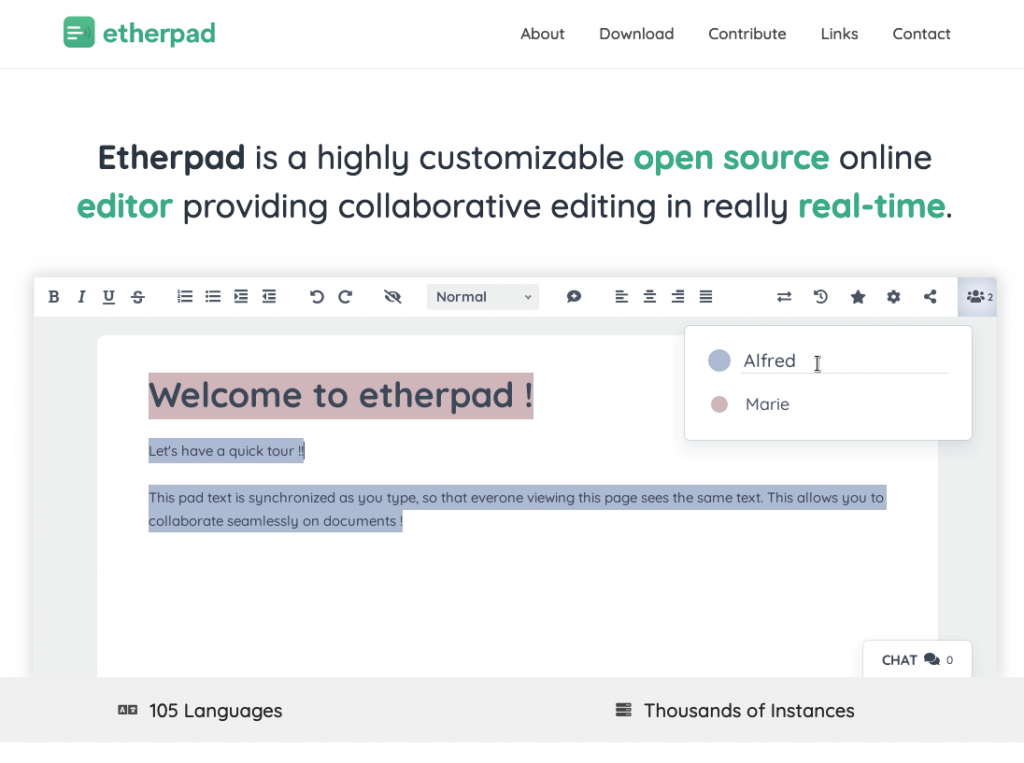
More: https://etherpad.org/.
PubPub
Open source Content Management System for publishing. It is easy to use and you can integrate your content into academic systems and formats. PubPub hosts over 3,000 communities. Anyone can create a free PubPub community at any time; all you need is an account and some very basic community details.
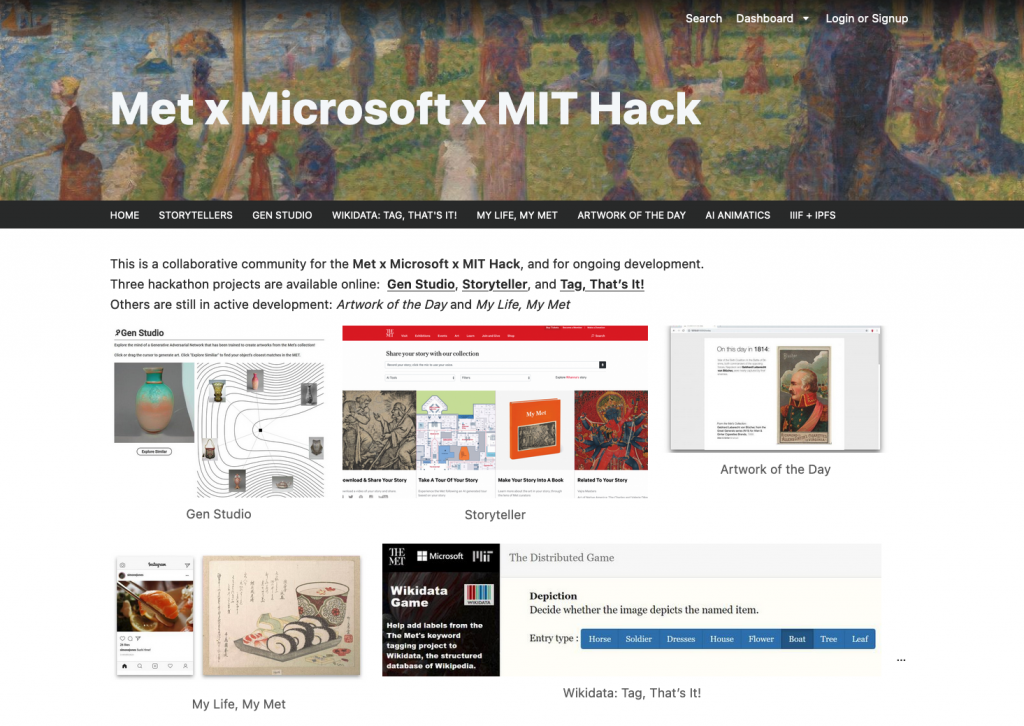
More: https://www.pubpub.org/
Manifold
Platform for publishing academic books where teachers and students can annotate, collaborate, and collect. Manifold allows its users to upload PDFs, Word-documents, ePubs, HTML or Google Docs-documents and then to enhance these publications by digital means to include raw data, interactive experience, audio and video next to simple annotations, links, and images. With this platform, academic publications on gaming and digital media may include actual the actual digital media discussed. Film theory books may include film fragments. Art historical texts may include picture galleries. Moreover, any registered user can highlight passages and comment in-text in the uploaded publications. And on top of all of this, Manifold maintains a pleasant reading experience.
The software of Manifold is provided by its developers at the University of Minnesota as open-source but also used by the University of Minnesota Press as a curated academic publishing platform. It is filled with fascinating reads, from Internet Daemons and Social Theory for Non-Humans to Dark Deleuze and The Geek’s Chihuahua. By maintaining these publications online through Manifold, UMP opens up academic discourse to peer-commenting for everyone – including trolls.
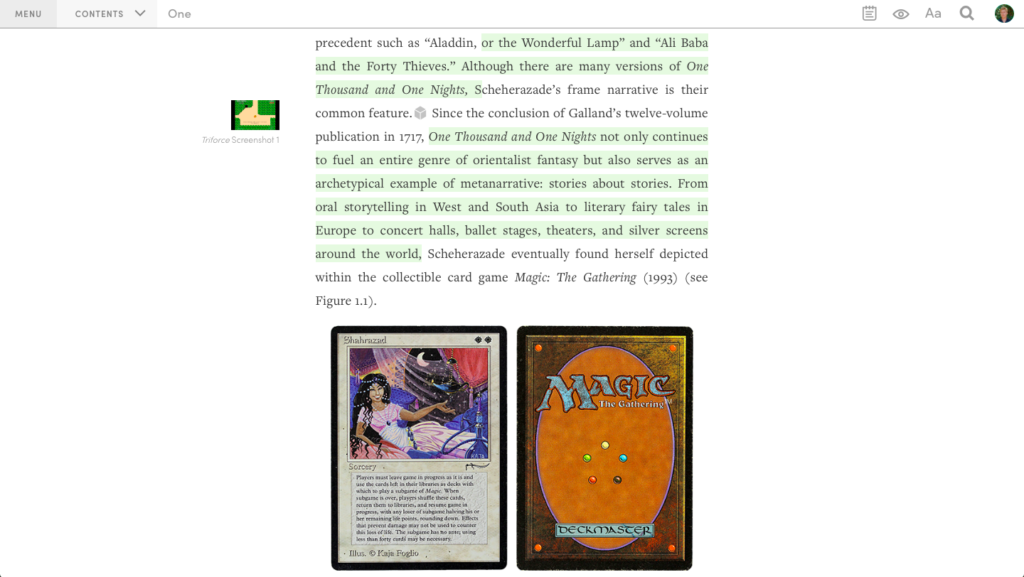
More: https://manifoldapp.org/
Relevant Practices
‘Bike Bulletin :: Pandemic Stories’ by Conway and Young
During the first UK Covid lockdown in March 2020 we scavenged wood and built a billboard to fit on our bike trailer. In the absence of gallery walls, conversations in pubs, loitering, union meetings, open studios, protests and demonstrations we wanted to create a physical location for a public offline address to Bristol – one framed by the context of the pandemic.
We are slowly inviting 19 people with a connection to Bristol to write something that in some way addressed this point in time. A short text as a pandemic protest, as provocation, to teleport us elsewhere, as a new idea, as an invitation, as an address, a joke, as a message of solidarity.
Texts are displayed individually on the bike billboard and taken around Bristol.
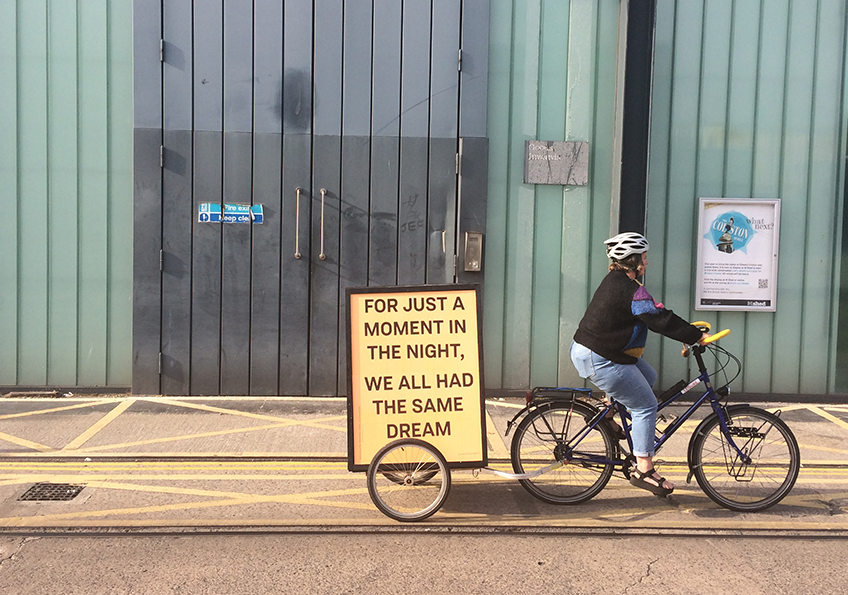
More: http://www.conwayandyoung.com/milk-report/
Betty the Book Machine at American Book Centre
The Betty the Book Machine at the American Book Centre is an Espresso Book Machine (EBM), once named ‘Invention of the Year’ by Time Magazine. It provides an on-site direct-to-consumer distribution model for books. Put simply, Betty is an automated book-making machine. The operator selects a title to print, and within a few minutes a book emerges: bound, trimmed and in full-color.
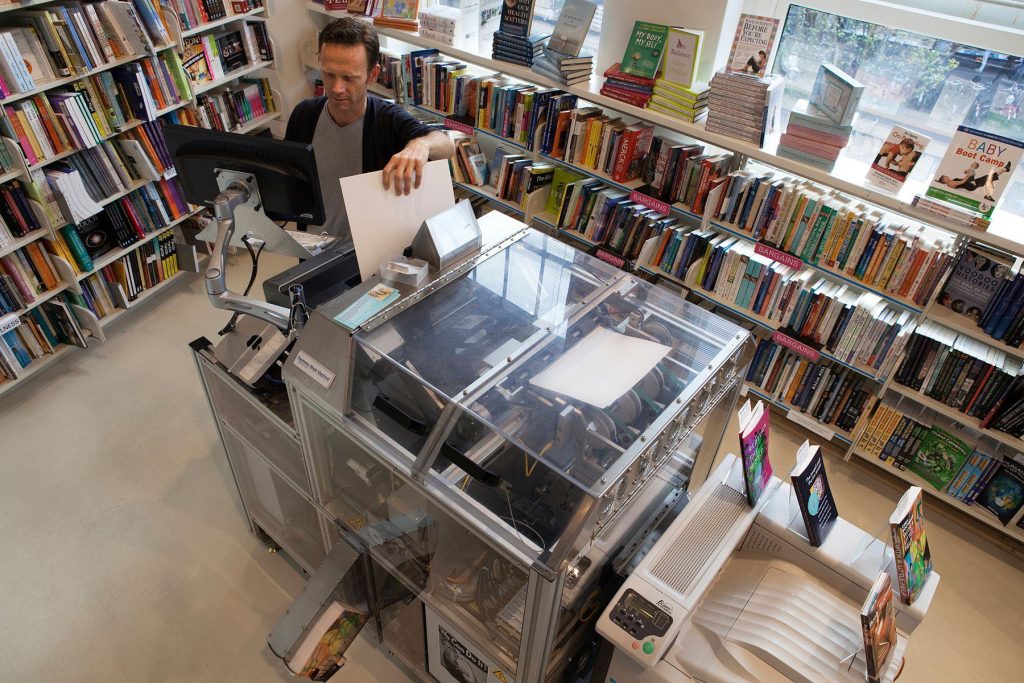
More: https://abc.nl/betty
‘Urgency Reader 2: Mutual Aid Publishing During Crisis’ by Queer.Archive.Work
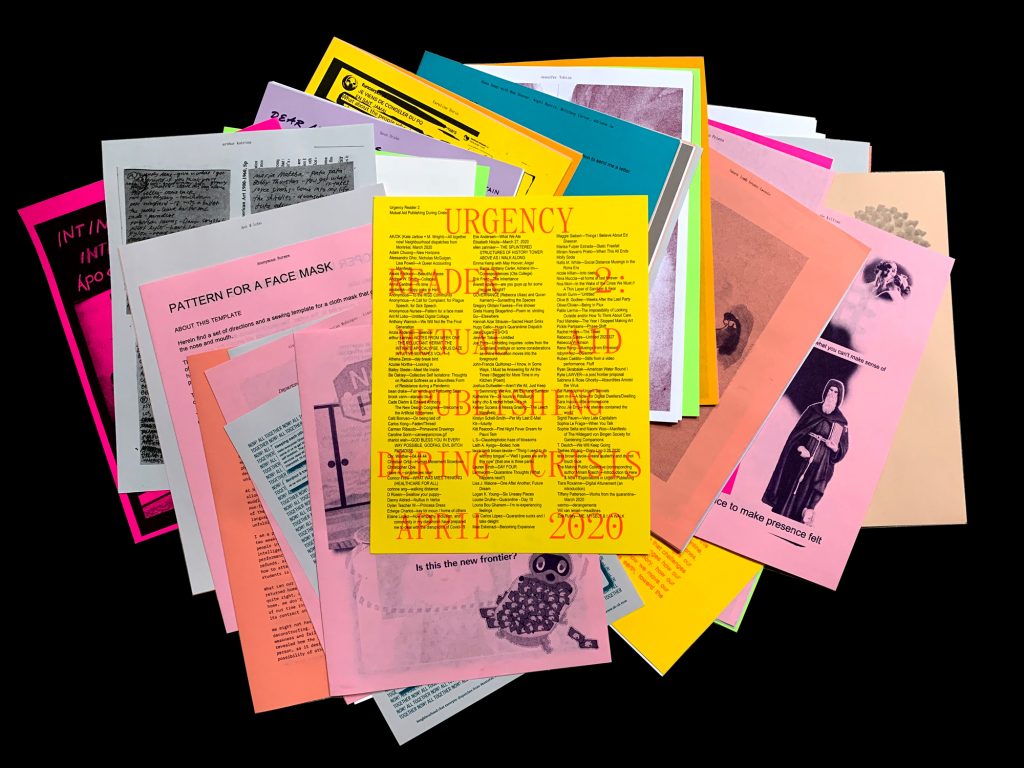
Loose assemblage of 129 risograph prints, folded sheets, and zines
278 pages + cover
Rubber bands and plastic bag
8.5 in. x 11 in. assembled/packaged
Print edition of 25 hand-numbered copies
Urgency Reader 2: Mutual Aid Publishing During Crisis began with a 10-day open call that was announced on March 18, 2020 in response to the COVID-19 pandemic. The call for work was motivated by two desires:
1—to collectively document some of the extraordinary conditions, dynamics, and emotions being experienced while in quarantine, and 2—to provide some relief to artists and writers impacted by the crisis, in both creative and monetary forms. How might publishing as artistic practice embody communal care?
More than 100 artists and writers submitted work, mostly generated during quarantine. An edition of 25 copies of Urgency Reader 2 was printed and assembled at Queer.Archive.Work during the first week of April 2020. A high-quality scan of the printed edition is available for free download on the website of Queer.Archive.Work.
More: https://queer.archive.work/publications/reader2/index.html
NXS WORLD
NXS World is a magazine on digital art and culture published between 2 and 4 times per year. The magazine approaches authors as nodes in a discursive network, creating unexpected relationships between people, texts, and issues.
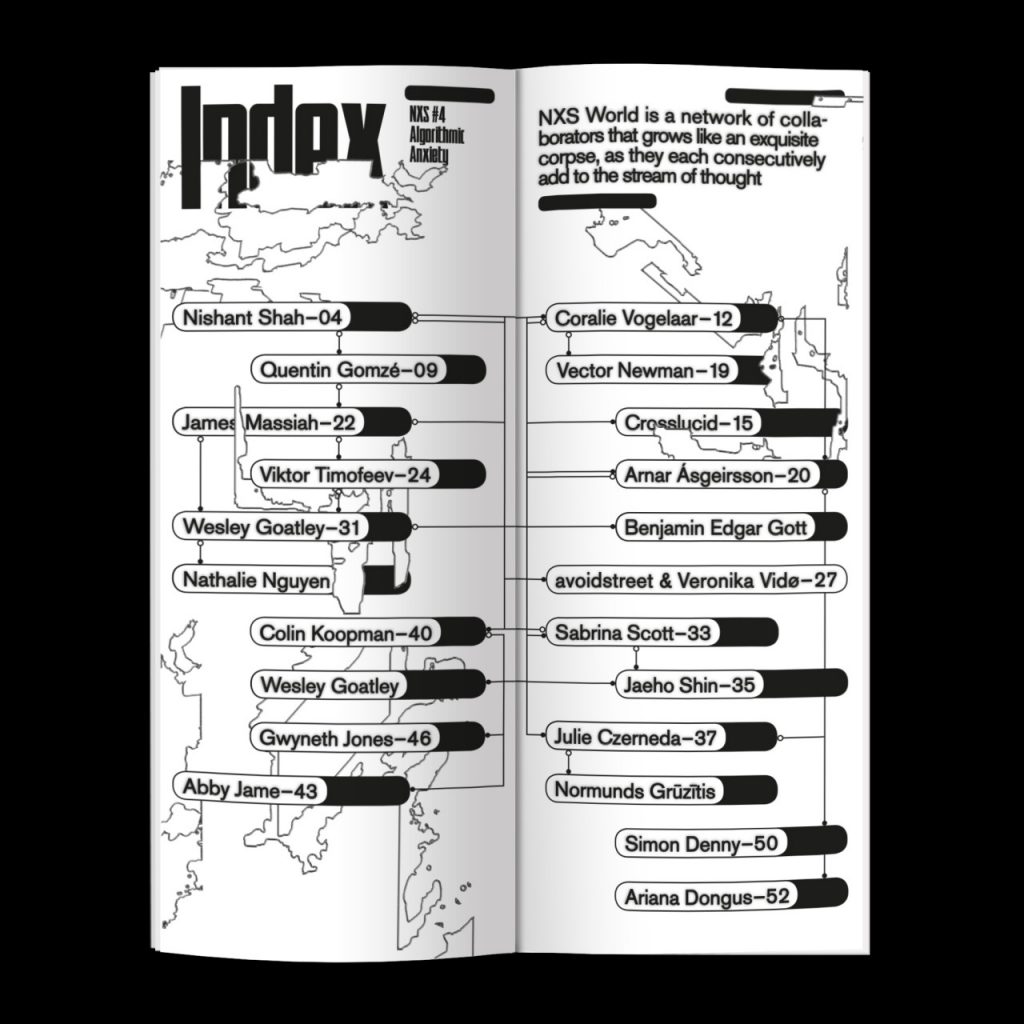
More: http://nxs.world/issues-index
The Last Mass Mail
The Norwegian organization Kritiklabbet made five small art criticism magazines during the 2018 Supermarket art fair. Through live presence and interaction, they revived art criticism as a collective publishing activity.

Email Publishing by the Institute of Network Cultures
From 2018 to 2019, the INC ran the research program Making Public, in which we looked at designing non-linear stand-alone publications, platform2platform content sharing, and automating periodical production processes. The most interesting experiment in this project was probably the publication of the research report, Here and Now? Reflections on Urgent Publishing. In the run-up to the launch of the print publication, the respective chapters were sent to a dedicated mailing list in specially designed emails. This method combined the ancient print book with the good old mailing list and a fresh, highly interactive user experience design into something that felt surprisingly urgent. Miriam Rasch, then coordinator of the research program, remembered that this publication led to a higher rate of responses and interaction with the readership. It’s usually rare to get personal feedback on books because the threshold to send a letter or email to the author or editor of a print book is quite high. But readers of the Urgent Publishing mailing list could simply reply to the email in their inbox chapters with their personal comments.

‘SomeTimes’, Hybrid Newsletter by Varia
Recently, Varia has started publishing the hybrid, bilingual newsletter SomeTimes / Af en toe. The contents are created collectively by the members of Varia in OctoMode and published as .pdfs and flyer-like prints. The format of these newsletters is a direct expression of the collective working process Varia uses. According to Simon Browne, contingent librarian and member of Varia, it cost some time to set up the template, but it’s pretty simple in its use. The .pdf newsletter is a seamless extension of the Varia website, spreading news on events and projects to the collective’s (international) network of cultural workers, geeks, and organizers. The print version, which feels like a crossover of a flyer and a local newspaper, allows for a bigger presence in the Rotterdam neighborhood. This reflects a tendency within Varia during the lockdowns, to not go online, but to focus on the hyperlocal and provide a community space. Urgent, hybrid publication in the arts doesn’t always equal digitization, but rather an adaptive workflow and method that allows for the right hybrid format according to needs.
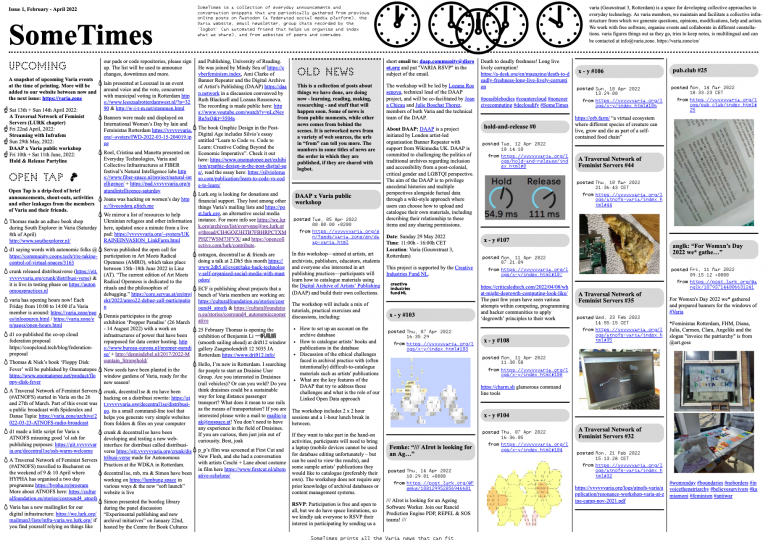

More: https://varia.zone/en/sometimes-af-en-toe.html
‘Hard Copy Soft Copy—Impermeable Domains’ by Maria van der Togt
To question and circumvent paywalls that enclose knowledge that should be public, Maria van der Togt has created the artwork Hard Copy Soft Copy—Impermeable Domains (2021). The work consists of a virtual platform with an open-source collection of digital publications, run on a raspberry pi, and a spatial printing and binding set-up. Members of the public use the on-site computer to select any of the documents and print and bind it on the spot. In rescuing material from the clutches of corporatization, the work upholds the true definition of ‘public’ through the simple gesture of providing resources without any expectation of return.
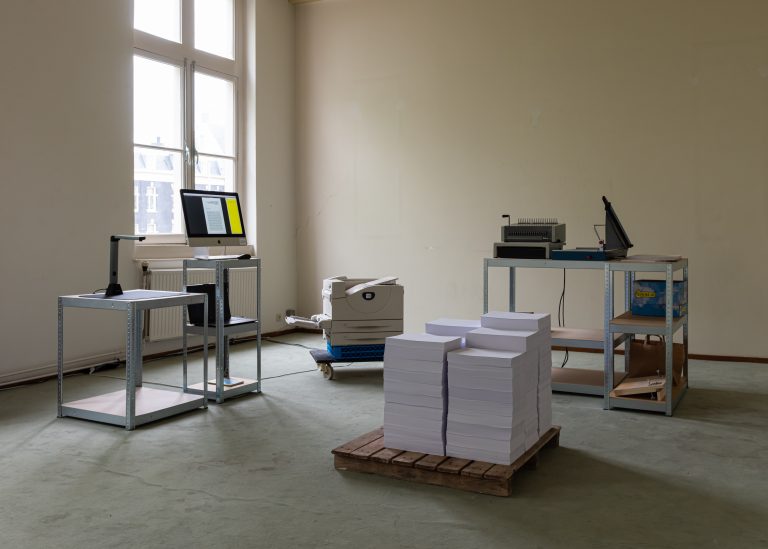
More: http://135.181.144.79:8080/
Digital Interactive Long-Forms by the New York Times
As a very large and growing media outlet, NYT has the resources to really develop interactive long-form essays, including video, graphics, and other types of interactive content in a smooth and attractive design. Two prime examples are ‘2020: The Year in Visual Stories and Graphics’, selected Times graphics, visualizations and multimedia stories from the year, and ‘The 1619 Project’, is a long-form journalism endeavor developed by Nikole Hannah-Jones, writers from The New York Times, and The New York Times Magazine which ‘aims to reframe the country’s history by placing the consequences of slavery and the contributions of Black Americans at the very center of the United States’ national narrative’.
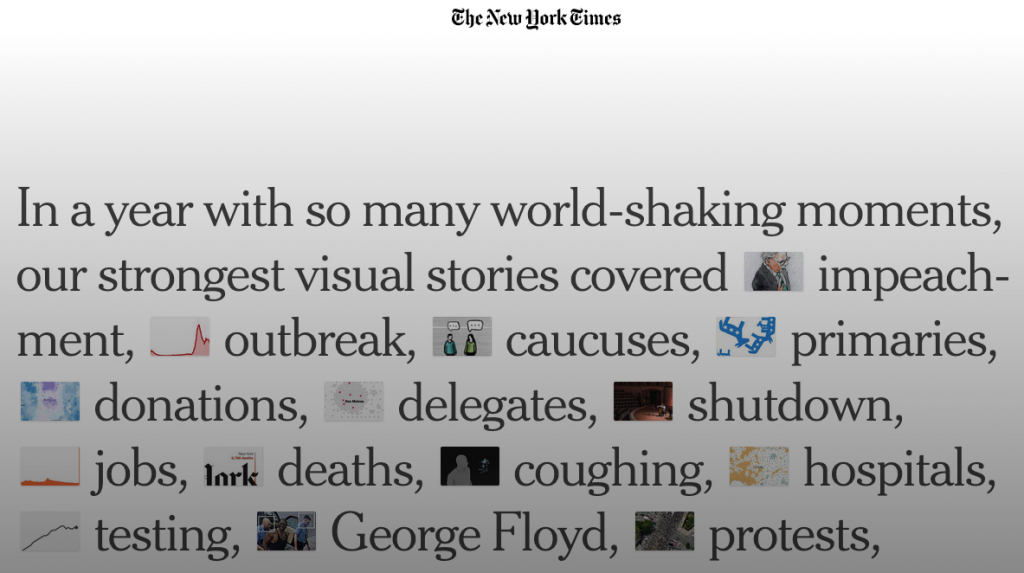
More: https://www.nytimes.com/interactive/2020/12/30/us/2020-year-in-graphics.html and https://1619books.com/#about-the-1619-project
XPUB Wiki
The best-known Wiki is Wikipedia. However, the software behind this website is open source, meaning that there are many instances of Wiki. An interesting example is the wiki of the Experimental Publishing (XPUB) MA-program of the Piet Zwart Institute. Students and staff use it to collect and archive relevant resources and communication.
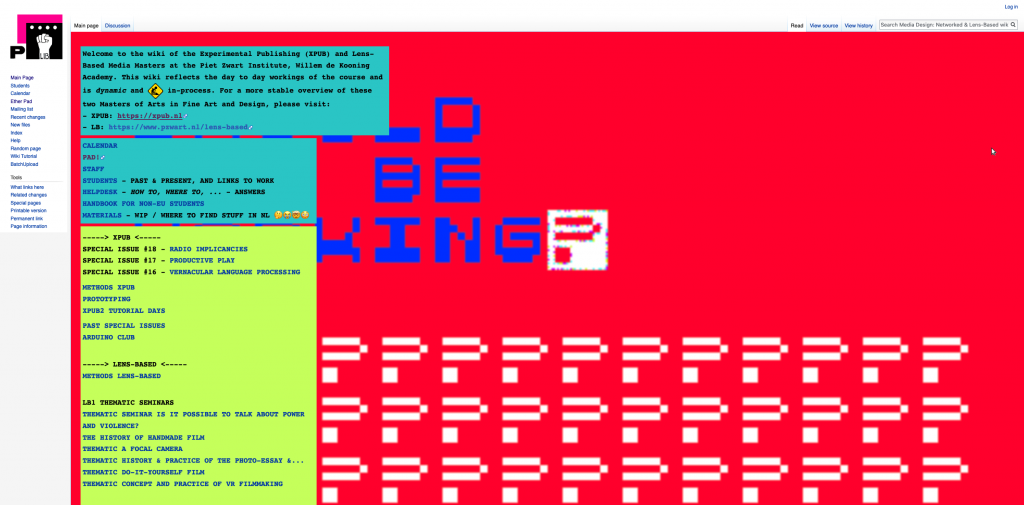
More: https://pzwiki.wdka.nl/mediadesign/Main_Page
‘100 pinnen in Parijs’ by Lotte Lentes
A writing and publishing experiment by Lotte Lentes in collaboration with De Internet Gids. Stories and observations collected during two weeks of walking (200km) are collected on a digital map to be browsed by readers in a non-linear way.
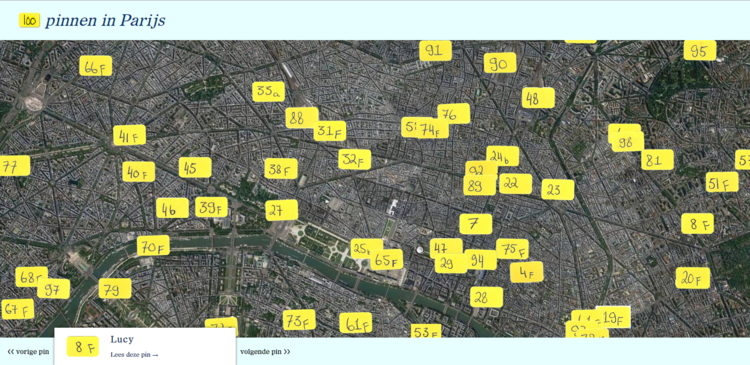
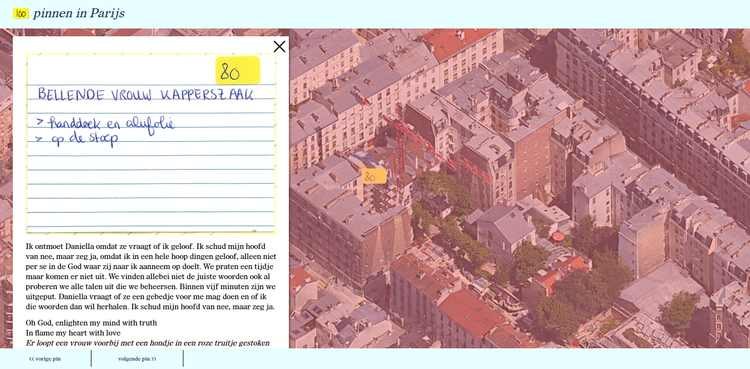
More: https://www.lottelentes.com/100-pinnen-in-parijs
Cyberfeminism Index by Mindy Seu
An online collection of lectures, images, repositories, and catalogs on cyber feminism which functions both as an archive and a digital publication. The write-up of the lectures can be viewed when opened in Web Inspector.



